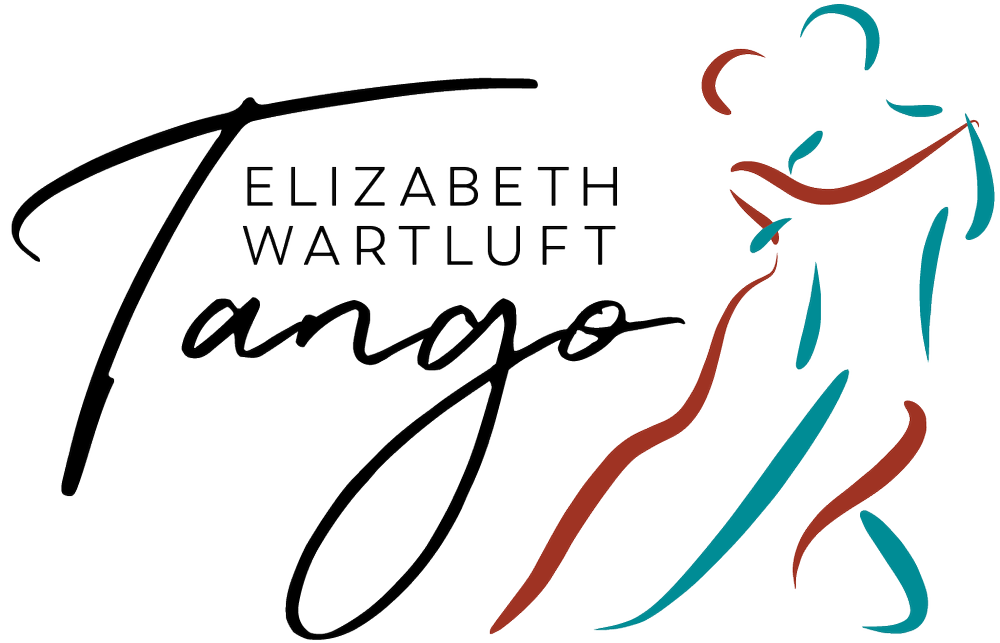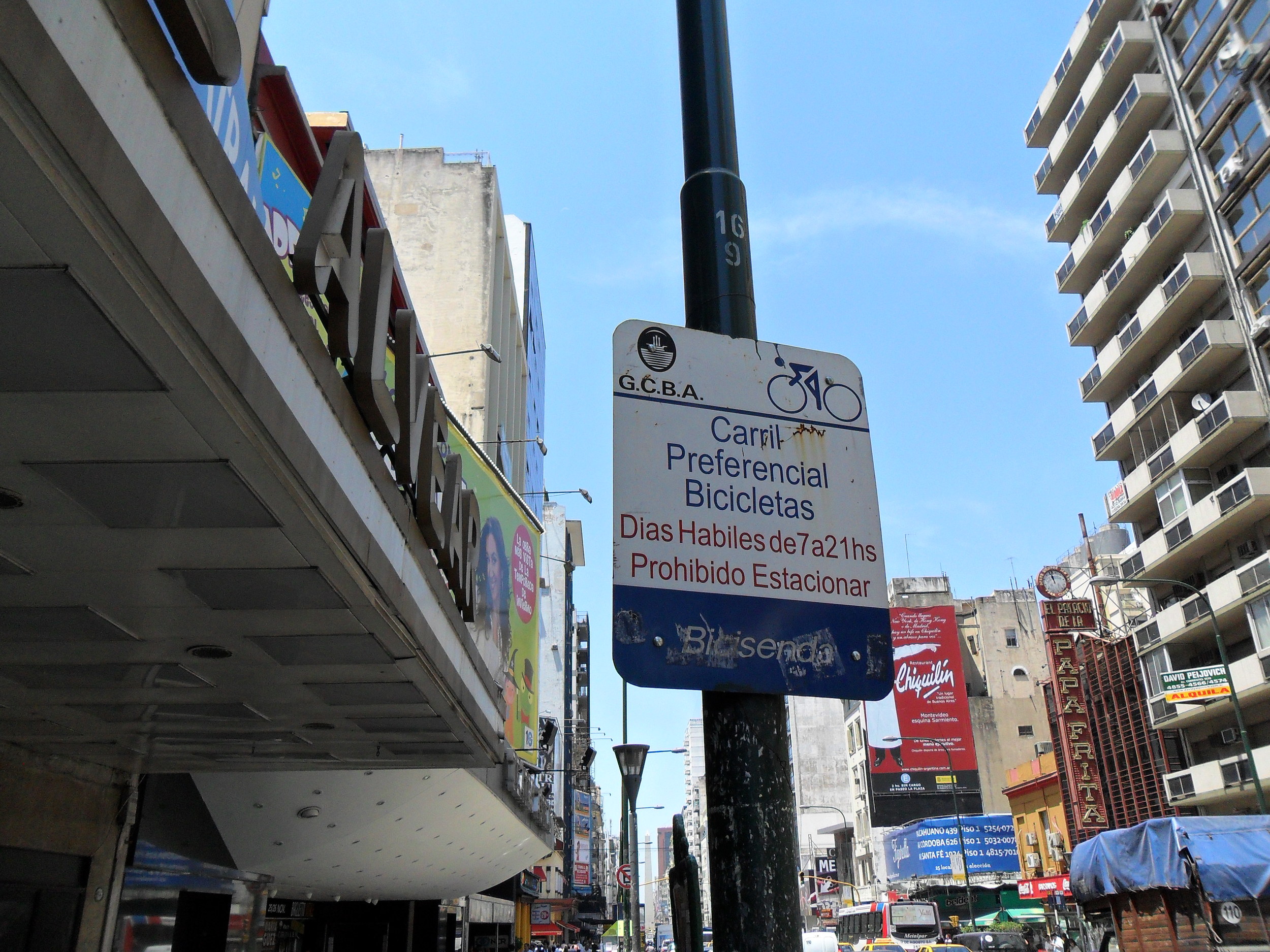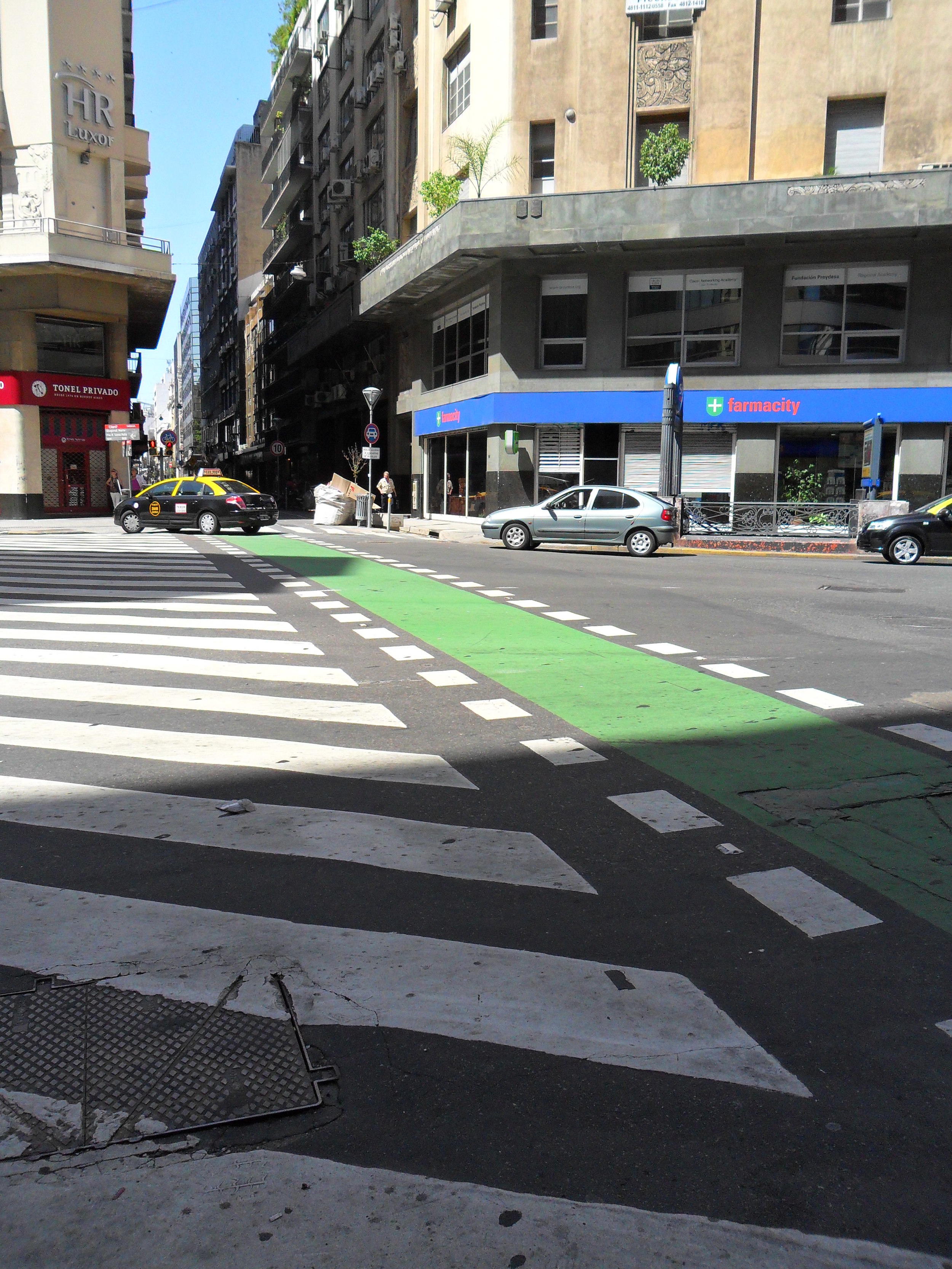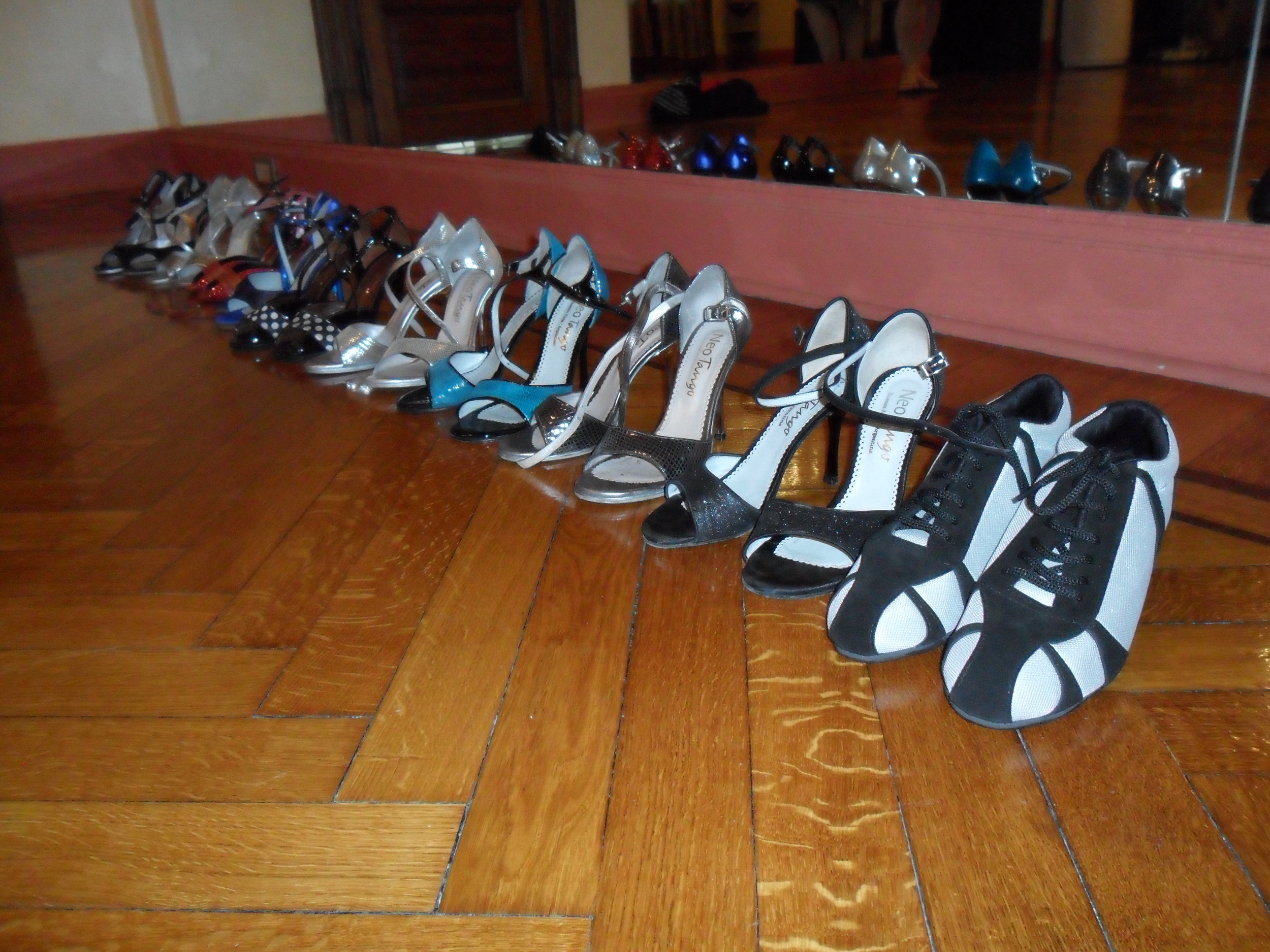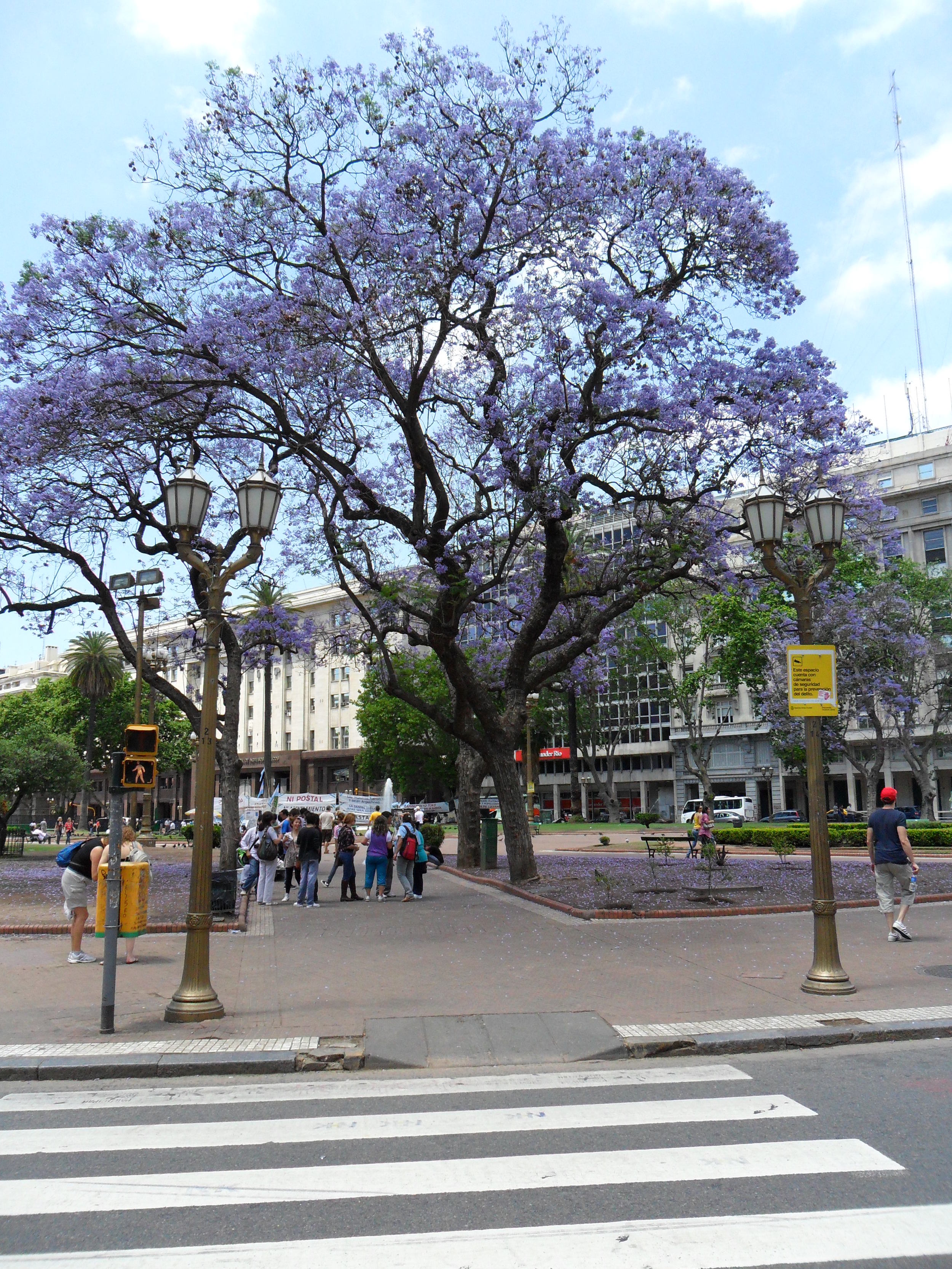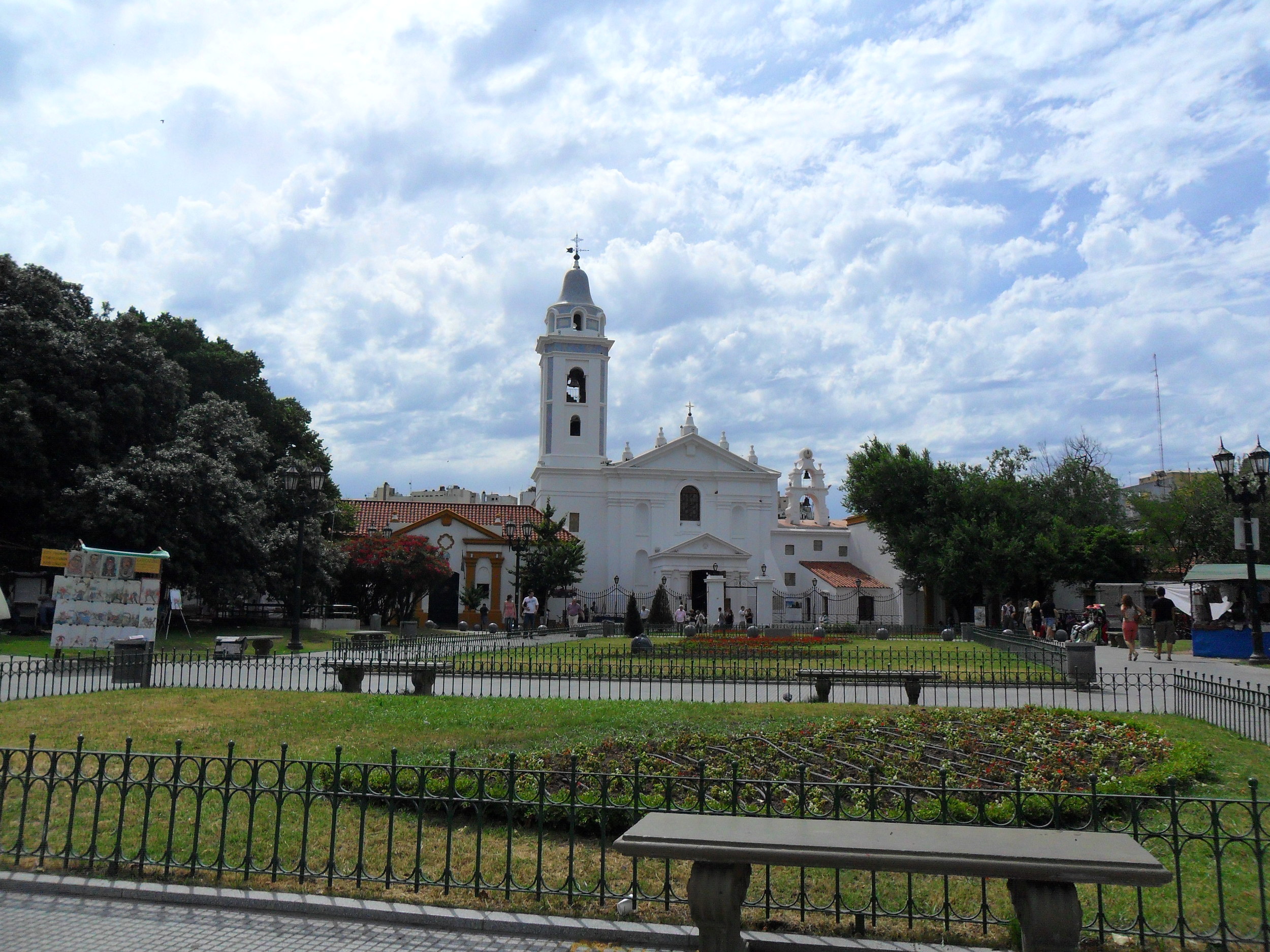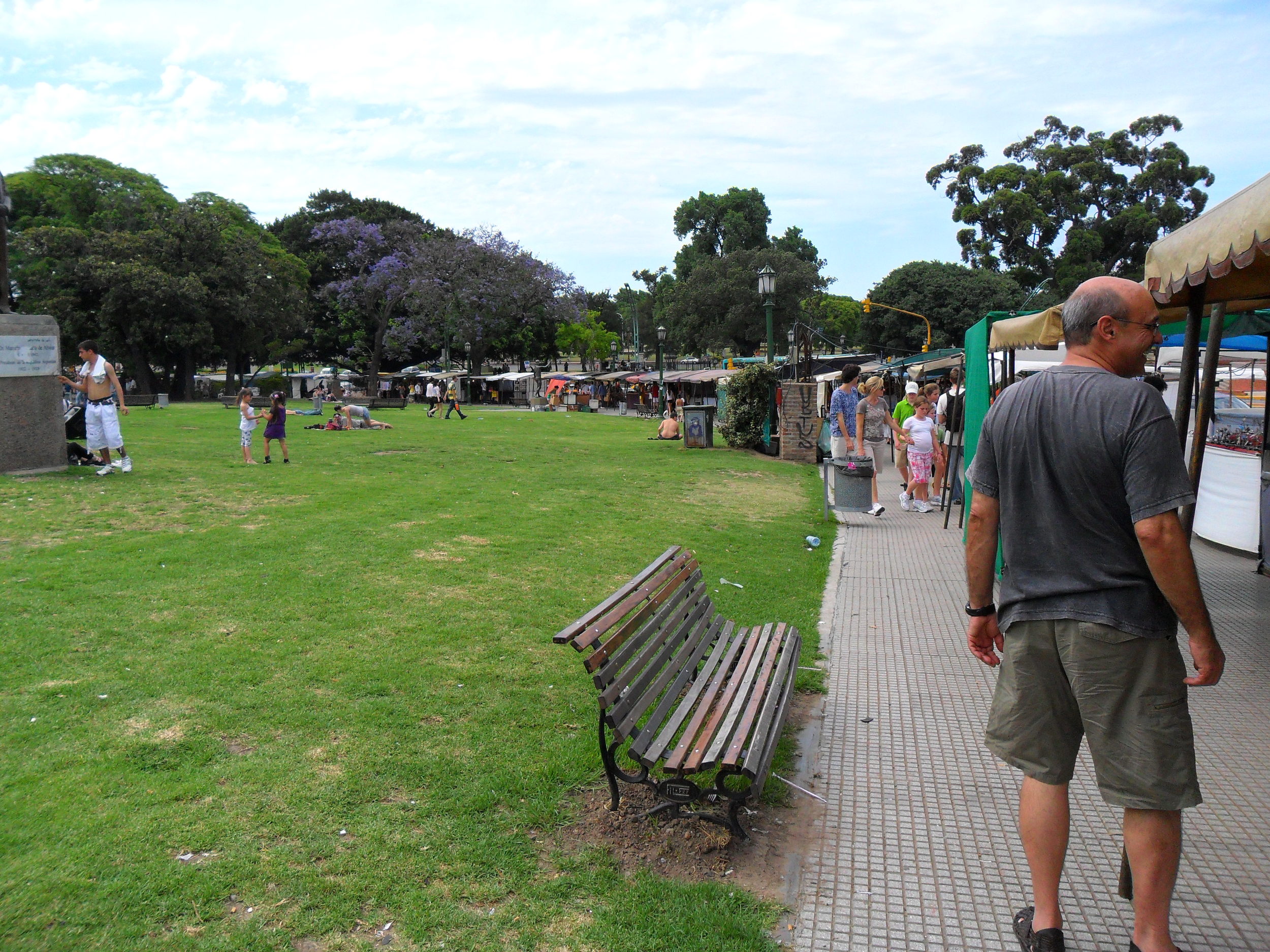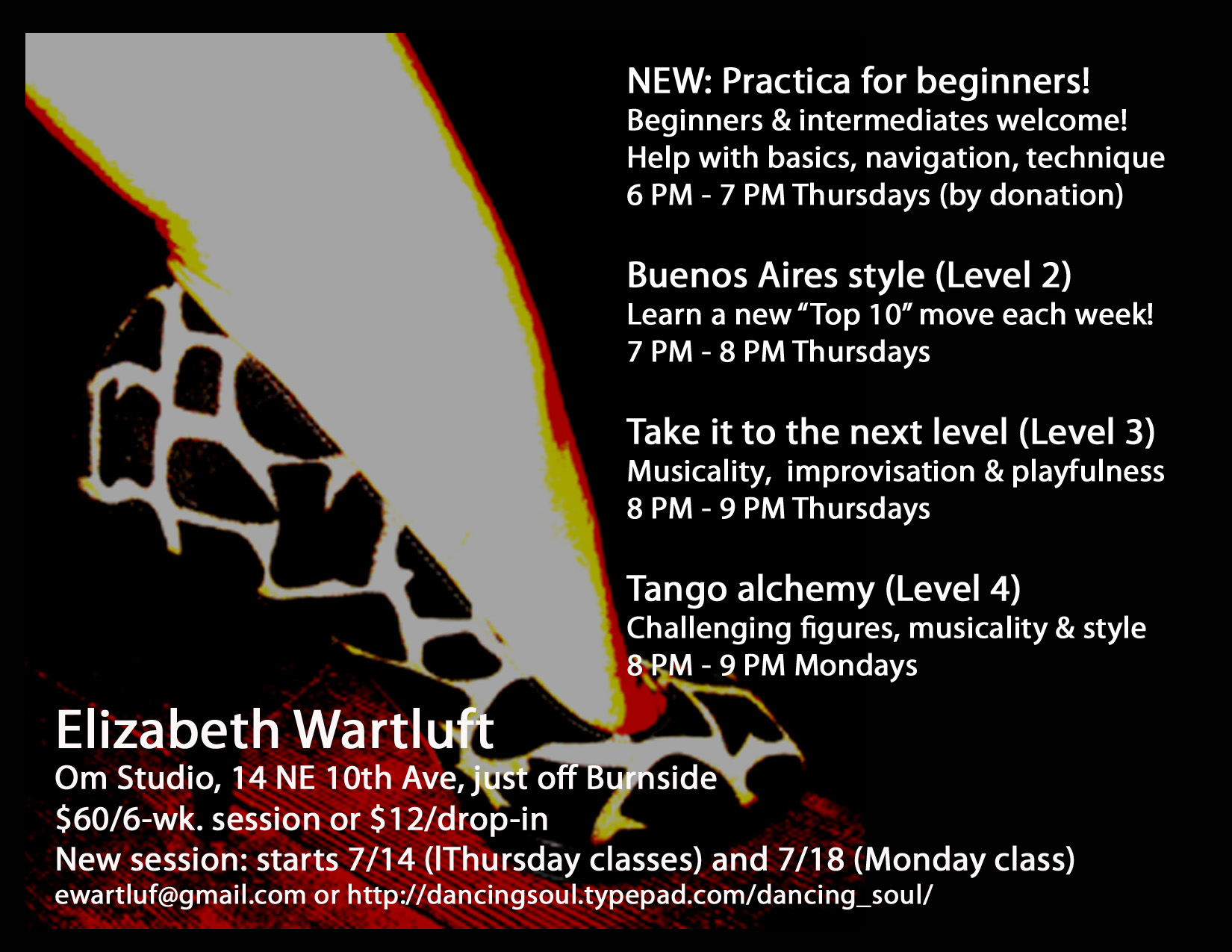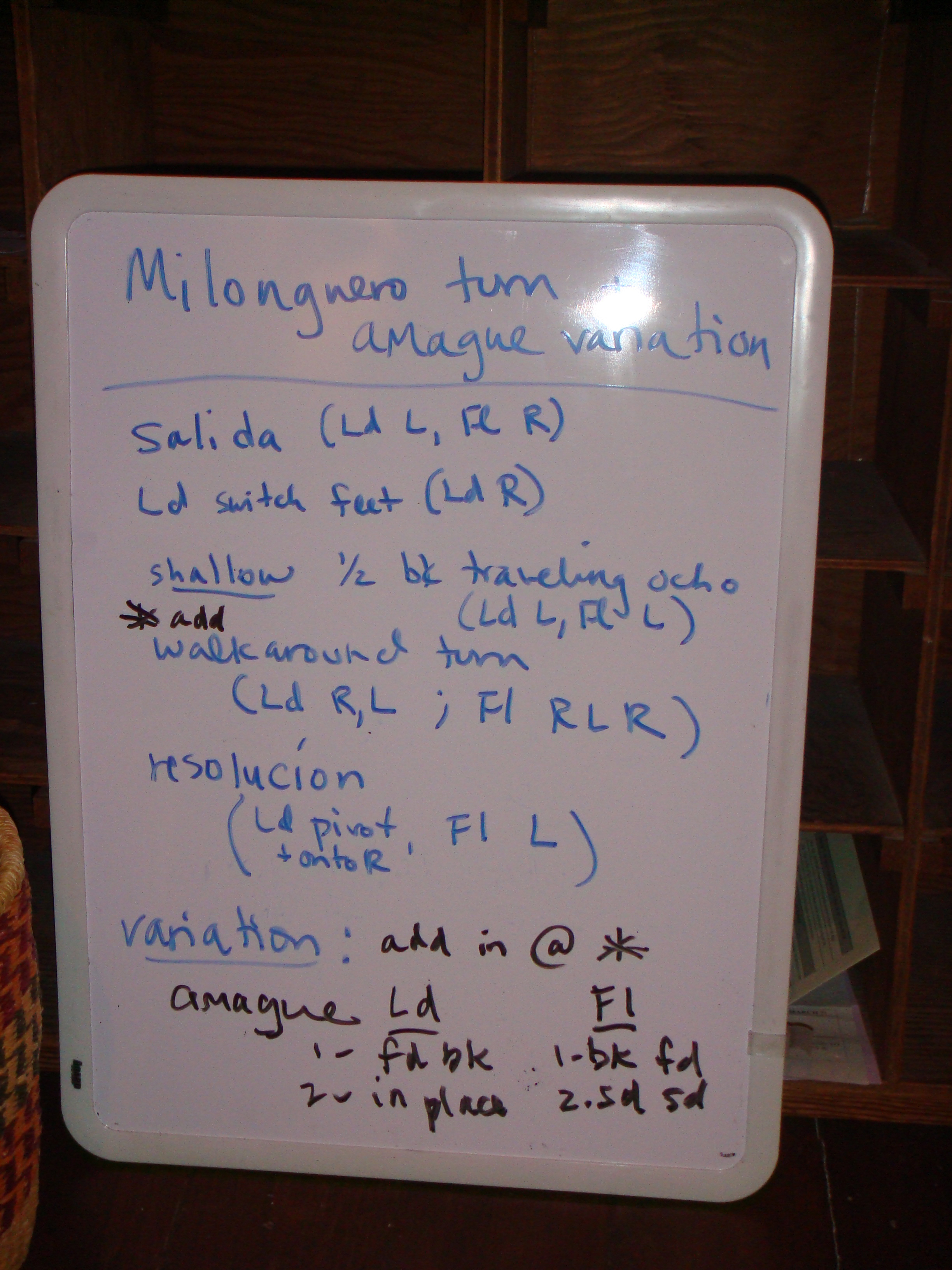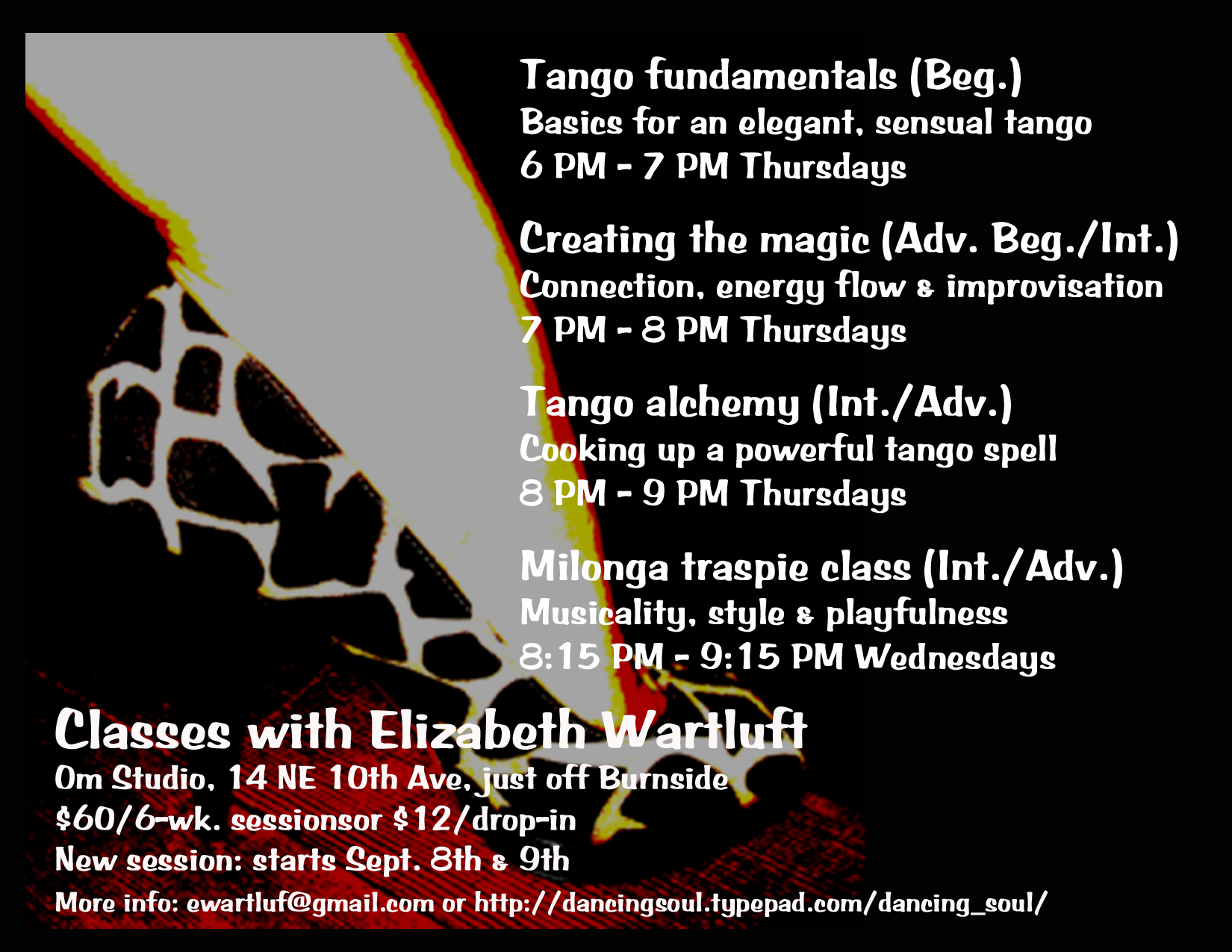Things are different this year in Buenos Aires. The high inflation rate has made everyone tighten their belt a bit, especially the elderly. A few men who I danced with last year have told me this year that they no longer go out nightly. They now go out two or three times a week instead. The difference is obvious in some of the milongas that had been preserves of the older guys. There are more women per male dancer than before. There is a higher percentage of foreigners than before. Also, there are simply gaps in the ranks: empty tables at places that never had empty tables.
Monday
Monday at "Maipu" (La Nacional, Alsina 1465) was packed full, more than any other milonga so far. I have been used to all milongas looking like this. The organizers said that tons of tourists are here right now, making it difficult to seat everyone. We were seated way in the back because we got there late, but one of the organizers, Dany, took a liking to me and made sure that some guys headed our way. Over the course of the night, we got to dance more and more, and ended up dancing continously by the end of the evening. Still, the ratio of foreigners to locals was high, especially later in the evening.
The organizer took a picture of me posing with one of his friends. He told the guy that he was going to cut that part of the picture out and keep the part with me in it. His friend told him that the camera was going to break and other stuff like that. I like it when the guys get silly together.
Tuesday
Tuesday at El Beso (Riobamba 416) was a workout in terms of cabeceo. Again, we were put in the last row, with two rows of women in front of us; mostly foreigners. Luckily a few guys we knew already saw us, and came to get us to dance, because the male:female ratio was off. I think it is due to the higher cost of going dancing because the bar area was almost empty, and it used to be where all the guys stood who could not get tables; it used to be standing room only.
A little old Argentine guy got stuck back in the corner, and spent a lot of time mumbling about "how dare they do that to me, when they put the young guys up in front?" but the waiter told me he knew the guy couldn't dance. Ouch! Does that mean he thought WE couldn't dance? I'll show him.
I had a really special tanda with a guy called Eugenio. I had danced with him Saturday night. He is not an advanced dancer by any means, but has a really good sense of rhythm, nice musicality--and awful floorcraft. He asked me if I had a husband, and I told him I had a son and a boyfriend; and asked him the same questions. He said he had two grown children, but that his wife had passed away after 35 years of marriage. He told me that was ten years ago, and then pulled out his phone and showed me her picture: the wallpaper on his phone. I tried to tell him how lucky he was to have had the love of his life married to him for that long, and he answered, "Lucky? Lucky? She died!!" The next song of the set was really emotional, and so was our dance. It felt completely different from the other songs in the tanda. I almost burst into tears myself, and I could tell he was struggling. Wow.
I had seen a guy from California walk in, and had avoided a cabeceo because we didn't do well on the dance floor the night before. However, when the rock 'n roll set came on, he was standing up, bouncing around, so I figured he could dance that. Yes! We did a good swing, and then an awesome salsa. It felt good to cut loose a bit and shake it! Much as I love tango, I don't think I could ever abandon my other dancing because it gives me other things that tango does not.
Just before we left, Gayle had changed her shoes, and I was walking over to change my shoes, when a few guys gave us grief about leaving before the end of the milonga. After all, we hadn't even looked at them! I told them we'd been sitting there all night, and they hadn't invited us to dance. "That's not our fault! It's the woman's fault! You didn't look at us at all!" True: I hadn't seen them at all. He handed my shoes to Gayle and dragged me out on the dance floor for a tanda. Strange, but fun.
Wednesday
Wednesday at "Mi Refugio" (La Nacional, Alsina 1465), there were a quarter of the people who went last year. Last year, this was our favorite night at La Nacional. This time, we had danced with all the men who were not in partners by midnight and were on to repeating ourselves, but we waited for the exhibition. Most of the men left before the exhibition, too, leaving only the young kids (mostly beginners) at one table, some tourists, couples, and maybe six available men.
The woman next to me danced one dance the whole night, and I never saw her friend get up from the table. Gayle and I danced most of the time, but that included accepting a cabeceo from the not-very-good Argentine boy after he stalked me for part of a tanda; it's hard to say no when all the women around you are poking you, saying, "He's looking at YOU."
Our amusement for the evening was a young German girl who was seated with us. While I was dancing, she announced to Gayle that it was hard to find a teacher because she was "a very good dancer!" She preferred the awful dancer to good dancers, but sat most of the night because she was not a very good dancer. Young, yes. Skinny, yes. Beautiful, yes. Good dancer? Not yet.
